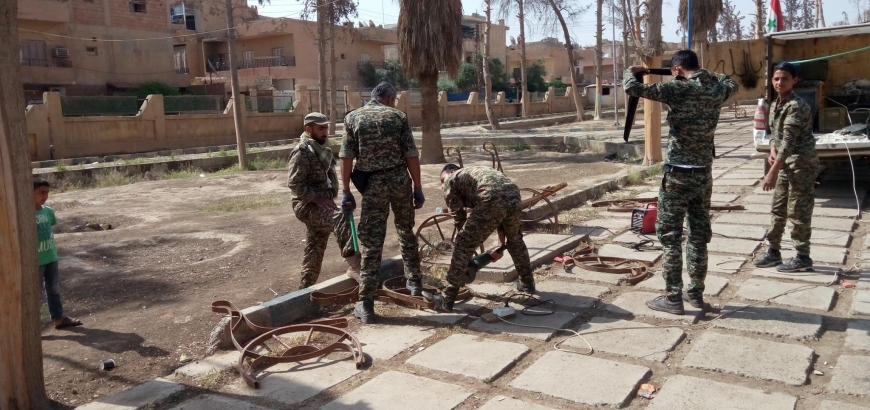Since the Islamic State (ISIS) was expelled from most of the areas which it controlled in the city of Deir ez-Zor and the province’s eastern and western countryside, Iran and the Shia militias it backs have begun another attempt to invade the province — this time, not only militarily, but culturally, economically and religiously. Their aim is to win the most important battle, which is the Shi’ification of the population to ensure their control over one of Syria’s most important regions, which is the door to the Mediterranean from Iraq.
The two questions which must be answered are: What steps are Iran taking to reach this aim? And, more importantly, has it succeeded?
The question seems difficult to answer, in light of the lack of any trustworthy statistics or information.
However an observer of areas in Deir ez-Zour under regime control, a year and a half after the ISIS was expelled, will notice that Iran has spared no effort to grow closer to the area’s residents with the aim of achieving two main goals. The first is to eliminate the negative image of the Iranian intervention in Syria and the crimes and massacres carried out by its forces and militias on the behalf of the regime’s survival.
The other aim is to win over the support of area’s residents and to persuade them to stand alongside them and achieve total loyalty. Iran is trying to do this through Shi’ification, which it sees as a way of creating loyalty and tools for its projects.
Here, Iran, through its arms, relies on seducing the population with services, education and health projects, by opening clinics and small hospitals for soldiers and members of its militias, which civilians are allowed to attend for free. They even set up giant screens in Deir ez-Zor’s squares for residents to watch the World Cup.
Iran has also relied on tribal figures with the aim of getting a larger base in the countryside, as they understand the influence these figure have in their environs. These are led by the former regime opponent Nawaf al-Bashir, who has not only helped Iran in achieving its aim of Shi’ification but has also supported it militarily by pushing a large number of its tribal members to volunteer in the Al-Baqar Shia militia to fight alongside the regime.
In the city, due to the lack of major tribal influence on residents, they have had to use other methods, such as recruiting people in local positions and media figures for their project who could serve their aims now and in the future. This pushed them to have a group of them come to Tehran for a days-long visit whose contents and aims were not revealed, in addition to pushing some loyalists to take official positions at the provincial level or in the regime government.
Firas Alawi, editor of the Al-Sharq News website, which is concerned with covering news in eastern Syria, told Alsouria Net that Iran had not been able to penetrate the “Deiri community” in its first attempts to Shiify the population, which began at the end of the 1980s. He attributed the reasons for this previous Iranian failure to the nature of society in the area.
Alawi believes that Albu Kamal (Deir ez-Zor’s furthest east) is the clearest target for Iran, because it provides many advantages, “including the geographical proximity with Iraq and a similar social fabric because of the overlapping relations across the border. In order to to do this, it is attempting to entice people with money and power as well as intimidating people and exploiting their distance from the area and tying their return to joining its militias or threatening their children.”
Alawi said that Iran has “partially” succeeded in penetrating some social classes and “people who know how to look out for their interests and are prepared to change their principles as needed.”
Rights activist Rami al-Assaf believes that the rate of Shi’ification is not moving quickly in Deir ez-Zor, despite the current Iranian efforts.
He told Alsouria Net that this news coming from the province came mostly from civilians in touch with relatives in the city and its countryside.
Assaf said: “It isn’t easy to Shi’ify people, especially given that 90 percent of the province’s residents are displaced or refugees, meaning less than 10 percent of the people are residents there. Therefore, it cannot be said that Shi’ism is popular with the residents of Deir ez-Zor who, for the most part, do not originate from the area.”
Assaf concluded: “There are major attempts at Shi’ifcation by Iran in Deir ez-Zor, but for the moment they have succeeded with stone only— such as building shrines and advocacy centers — and not with people.”
This article was translated and edited by The Syrian Observer. Responsibility for the information and views set out in this article lies entirely with the author.


